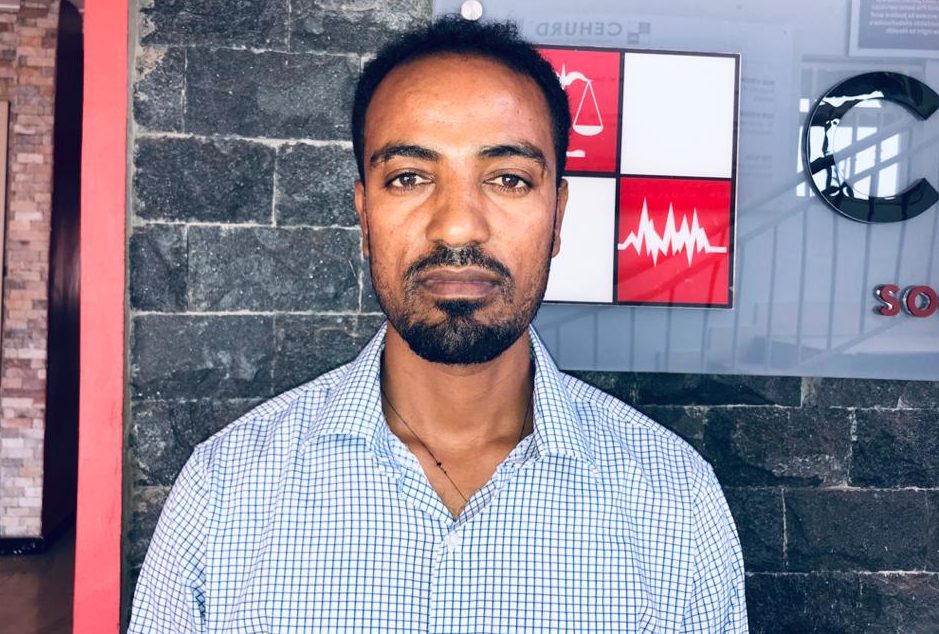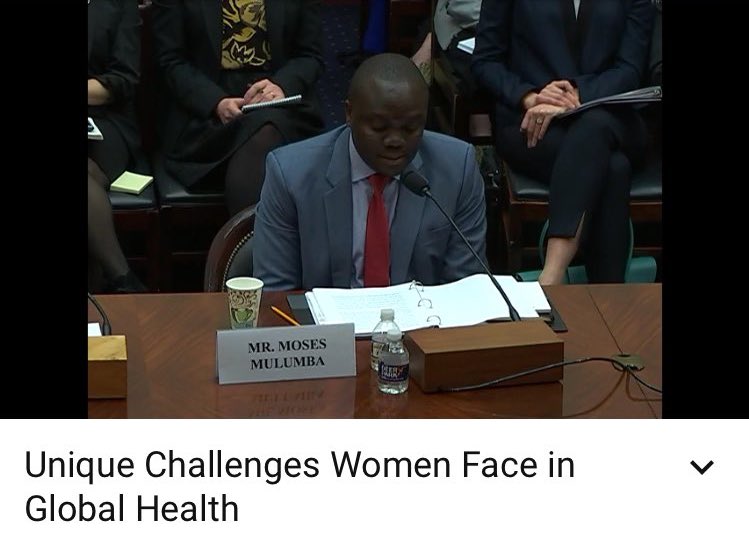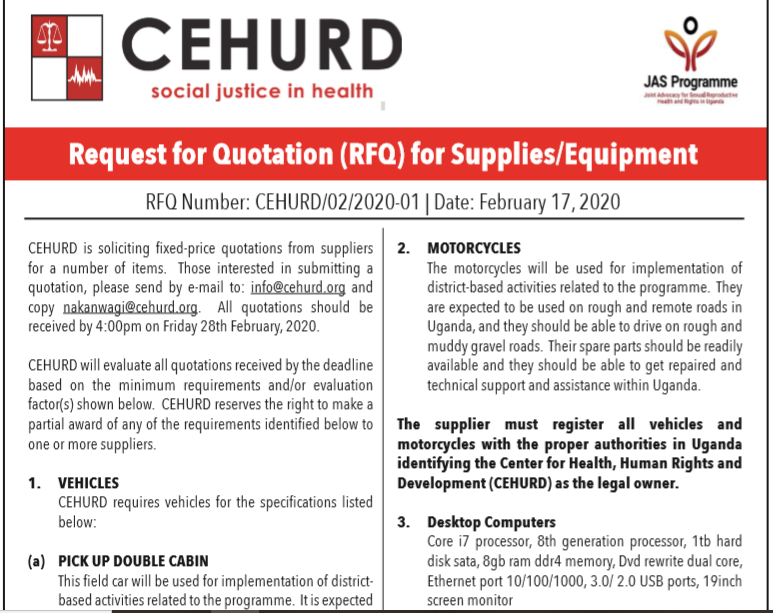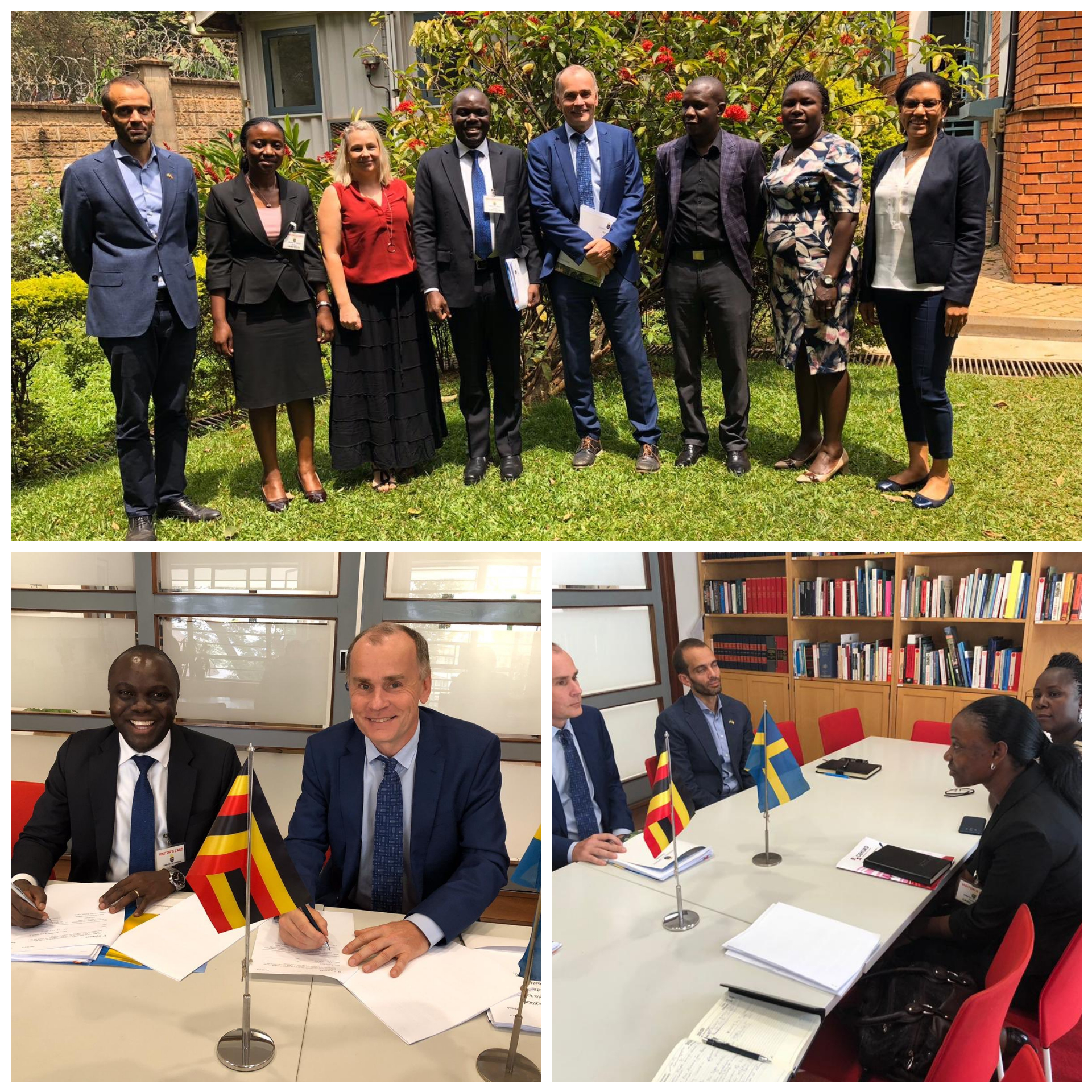Improving Maternal Health and Promoting Safe Motherhood with Three-Pronged Approaches: Education, Human Rights and Access to Reproductive Health Services in Uganda
Sefinew Demlie Gezahegn
(BSW, MA, MS)
Open Society Institute’s Civil Society Professionals Program Fellow (2019/20) at CEHURD
The purpose of this paper is to understand the extent of maternal health problems in Uganda. The paper will explain the major causes of maternal death, complications of maternal health, access to reproductive health services, and interventions to improve maternal health and promote safe motherhood.
Maternal health is the overall health of a mother during gestation, pregnancy, childbirth, and for a period afterwards. Maternal death is “the death of a woman while pregnant, or within 42 days of termination of pregnancy, irrespective of the duration and site of the pregnancy or its management (from direct or indirect obstetric death), but not from accidental or incidental causes” (Roback Morse, 2014, par. 6).
According to the World Health Organization (WHO) (2019), approximately 830 women die daily from preventable causes associated with pregnancy and childbirth. In 2017, the Maternal Mortality Ratio (MMR) in developing countries like Uganda was found to be 462 per 100,000 live births whereas the MMR for high income countries was 11 per 100,000 livebirths (WHO, 2019), a stark 451 difference.
In the East African region, major barriers such as inaccessible Sexual and Reproductive Health (SRH) care services contribute to maternal deaths. To prevent maternal mortality and morbidity, access to comprehensive abortion care and contraceptive services are largely needed. In this East African region, it is estimated that 2.7 million abortions take place annually; however, a majority of these abortions are unsafe and oftentimes a cause for maternal mortality and morbidity (Cleeve et al., 2016).
In 2016, the Ugandan Demographic Health Survey (UDHS) indicated that Uganda has shown slight progress in reducing maternal mortality which was 368 deaths per 100,000 live births compared to 428 maternal deaths per 100,000 live births in 2011(UDHS, 2011; UNICEF Uganda, 2019). In 2016, approximately 15 pregnant Ugandan women were dying every day because of direct causes such as hemorrhage and hypertensive disorder.
Complications (such as high blood pressure, gestational diabetes, anemia, infections, breech position) during pregnancy and following childbirth remain a common cause of maternal mortality. Almost all of these complications develop during pregnancy (Atuhaire & Kaberuka, 2016). In Uganda, hemorrhage (42%), prolonged labor (22%) and unsafe abortion (11%) are the major causes for maternal mortality (Böhret, 2018).
Notably, the above statistics are attributed to subsequent consequences such as violence, lack of education and sexuality education, unplanned and unwanted pregnancy, early marriage, and vulnerability from infections/HIV/AIDS (United Nations Population Fund, 2011). All of which result to lack of assistance and women failing to receive support from their respective communities. In this regard, three major challenges have been identified that inhibit improving maternal health which encompasses; generally weak health systems, inadequate funding for reproductive health, and lack of respect for women’s and girls’ rights at large.
Supporting Opportunities for Ugandans to Learn (SOUL) Foundation (n.d.) indicated that women in rural Uganda are suffering from several barriers to access lifesaving maternal healthcare, mainly associated with delays. These delays include delay in reaching care (lack of transport and road infrastructure), delay in receiving the appropriate and adequate care (lack of skilled birth attendants at delivery), and delay in decision making to seek care. This clearly indicates causes of maternal death are largely preventable with appropriate interventions such as well-equipped facilities, access to trained midwives at facilities, strong referral systems, among others.
Institutions like the Center for Heath Human rights and Development (CEHURD) have over the years worked hand in hand with partners to curb existing barriers to women’s access to maternal health services, safe motherhood and Sexual Reproductive Health and Rights. In 2019 as part of the commemoration of International Safe Motherhood Day, under the theme “Midwives for Mothers” CEHURD held a “National Dialogue on the State of Maternal Health in Uganda” that took place at the Golf Course Hotel in Kampala. This national dialogue was attended by members of Parliament (specifically those from the Parliamentary Committee on Health), officials from the Ministry of Health, Reproductive and Adolescent Health Divisions, Civil Society Organizations, and various coalitions among other stakeholders.
The welcome remarks by Ms. Nakibuuka Noor Musisi, Director of Programs at CEHURD, had an emphasis on Uganda’s alarming Maternal Mortality Ratio(MMR) currently projected at 336/100,000 live births (approximately 6,000 maternal deaths in a year) caused by hemorrhage, hypertensive disorders of pregnancy, malaria, HIV/AIDS among others (Uganda Demographic and Health Survey 2016). Notably, uneducated girls are more at risk of teenage pregnancy (35%) compared to girls with a high school education (17%). According to UNICEF (2015), it is projected that 45% of girls in Uganda get into early marriage even though the legal age for marriage is to be 18 years old (Sofia Garsbo, 2018). In this regard, 40% of girls get married before their 18th birthday where one out of 10 gets married before the age of 15(Girls not Brides, n.d.). Child marriages in Uganda continue to be high and the second worst in the East African community following South Sudan. Contributing factors for child marriage specifically in northern Uganda include lack of education, cultural and social beliefs, and high rate of poverty (Save the Children Uganda, 2018).
Participants at the National Dialogue identified common challenges they are facing in providing maternal health services in Uganda, which include lack of dignity and respect at facilities, limited human resource, unaffordable costs, and lack of medicine. Furthermore, emphasis was on delays as a fundamental cause for maternal mortality due to lack of blood, lack of transportation, inadequate staff in facilities and delay in decision making. As an intervention, National Dialogue participants came up with solutions such as blood donations (community blood harvesting), institutionalizing Maternal and Perinatal Death Surveillance and Response (MPDSR), increasing quality of care initiatives, high stakeholders’ engagement and referral systems to address maternal mortality in Uganda.
Another essential part of the dialogue was evaluating the implementation of the 2011 Parliamentary Resolution on Maternal Health. The resolution incorporated issues such as maternal death audits; Abuja Declaration of 15% of Gross Domestic Product (GDP) budgeting for health sector; midwifery training curriculum; addressing the shortage of medical professionals; community empowerment to fight against maternal mortality; and parliament annual reports on the status of maternal mortality. In order to realize these essential themes, members of parliament, representatives from the Ministry of Health, Civil Society Organizations, and other coalitions agreed to continue working hand in hand on improving maternal health by providing alternative policy options and working with communities closely.
All in all, the state of maternal health is a pressing global concern specifically in Uganda due to low funding for health care services, insufficient infrastructure (roads, electricity), lack of enough skilled health workers, inadequate supplies in facilities, lack of education and sexuality education, cultural practices and beliefs. As a result of such disparities, maternal mortality remained high.
Safe motherhood can be realized through providing human rights guarantees, such as the right to access to full information and quality services to make informed decisions without barriers (be it legal, political or health related) and free from any violence or intimidation activities. Essentially, the prevention of maternal death and illness is a basic human right, and most importantly, it is a social justice issue. Every woman is entitled to the right to life, safe maternal health care, non-discrimination, and equality. In order to improve maternal health and reduce maternal mortality, the following approaches are recommended.
Approach One: educating women and girls offers the opportunity to delay marriage and the first birth until adolescents are physically, psychologically, and economically well prepared to be healthy mothers. Given these points, health information and contraceptive services should be available for teenagers and adolescents to help them make informed decisions for a delayed marriage and first birth. Empowering women and girls through education further benefits them to claim their rights (including their sexual reproductive health rights); escape from the poverty trap; and essentially to protect themselves from traditional and cultural practices.
Approach Two: access to facilities with adequate supplies, skilled health workers (gynecologists, midwives, nurses, obstetricians, and medical officers) and infrastructural developments (roads) must be available for coordinated standby maternal health services. Solving access issues lessens maternal deaths caused by preventable delays. Furthermore, skilled health professionals should attend all childbirths specifically to avoid hemorrhage (severe bleeding) and infections after birth.
Approach Three: partnerships and stakeholders’ active engagement is an invaluable resource in creating safe motherhood in communities. In order to reduce the maternal mortality ratio to less than 70 per 100,000 live births to achieve the Sustainable Development Goals (SDGs) by 2030, the collaboration of major stakeholders is largely needed. They together may host maternal health and safe motherhood awareness raising programs such as TV shows (dramas), radio talk shows, campaigns on social media and brochure distributions throughout Uganda. They also can push the government to formulate and implement policies to reach out the most vulnerable and indigenous communities in the realization process of safe motherhood and improved maternal health.
In conclusion, integrating of these 3 approaches will go a long way in the realization of safe motherhood in Uganda.
References
Anastasi, E., Borchert, M., Campbell, O., Sondorp, E., Kaducu, F., Hill, O., & Okeng, D. (2015).
Losing women along the path to safe motherhood: Why is there such a gap between women’s use of antenatal care and skilled birth attendance? A mixed methods study in northern Uganda. BMC Pregnancy and Childbirth. Retrieved from (Böhret, 2018)
Atuhaire, R., & Kaberuka, W. (2016). Factors contributing to maternal mortality in Uganda. African Journal of Economic Review, 4(2). Retrieved from https://www.ajol.info/index.php/ajer/article/view/136040
Böhret, I. (2018). Maternal Mortality in Uganda. https://doi.org/10.13140/RG.2.2.16930.07361
Cleeve, A., Oguttu, M., Ganatra, B., Atuhairwe, S., Larsson, E. C., Makenzius, M., … Gemzell-Danielsson, K. (2016). Time to act—Comprehensive abortion care in east Africa. The Lancet Global Health, 4(9), e601-e602. doi:10.1016/s2214-109x (16)30136-x Ensuring Every Woman Can Deliver with Dignity. (n.d.).
Retrieved from https://www.souluganda.org/maternalhealth
Girls not Brides. (n.d.). WHAT’S THE CHILD MARRIAGE RATE? HOW BIG OF AN ISSUE IS CHILD MARRIAGE? Retrieved from https://www.girlsnotbrides.org/child-marriage/uganda/
Priorities for Safe Motherhood. (2016). Retrieved from http://www.safemotherhood.org/priorities/index.html
Roback Morse, A. (2014, January 10). Definitions of maternal mortality.
Retrieved from https://www.pop.org/definitions-of-maternal-mortality/
Save the Children Uganda. (2018, November 14). ONE GIRL EVERY MINUTE IS AT RISK OF CHILD MARRIAGE IN UGANDA, WARNS SAVE THE CHILDREN. Retrieved from https://uganda.savethechildren.net/news/one-girl-every-minute-risk-child-marriage-uganda-warns-save-children-1
Sofia Garsbo, I. (2018). Early marriage in Mbale District, Uganda: Examining young women’s perceptions, agency and the influence of The Hunger Project Uganda (Unpublished doctoral dissertation). University of Amsterdam, Amsterdam.
United Nations International Children’s Emergency Fund Uganda. (2019, September 20). More women and children survive today than ever before – UN report. Retrieved from https://www.unicef.org/uganda/press-releases/more-women-and-children-survive-today-ever-un-report
United Nations Population Fund. (2011, March 2). Keys to improving maternal health: education, resources and community partnerships. Retrieved from http://unfpa.org/news/keys-improving-maternal-health-education-resources-and-community-partnerships
World Health Organization. (2019, September 19). Maternal mortality. Retrieved from https://www.who.int/news-room/fact-sheets/detail/maternal-mortality
The author of the article can be reached out through sefinewd@gmail.com / sgezahegn@brandeis.edu.






